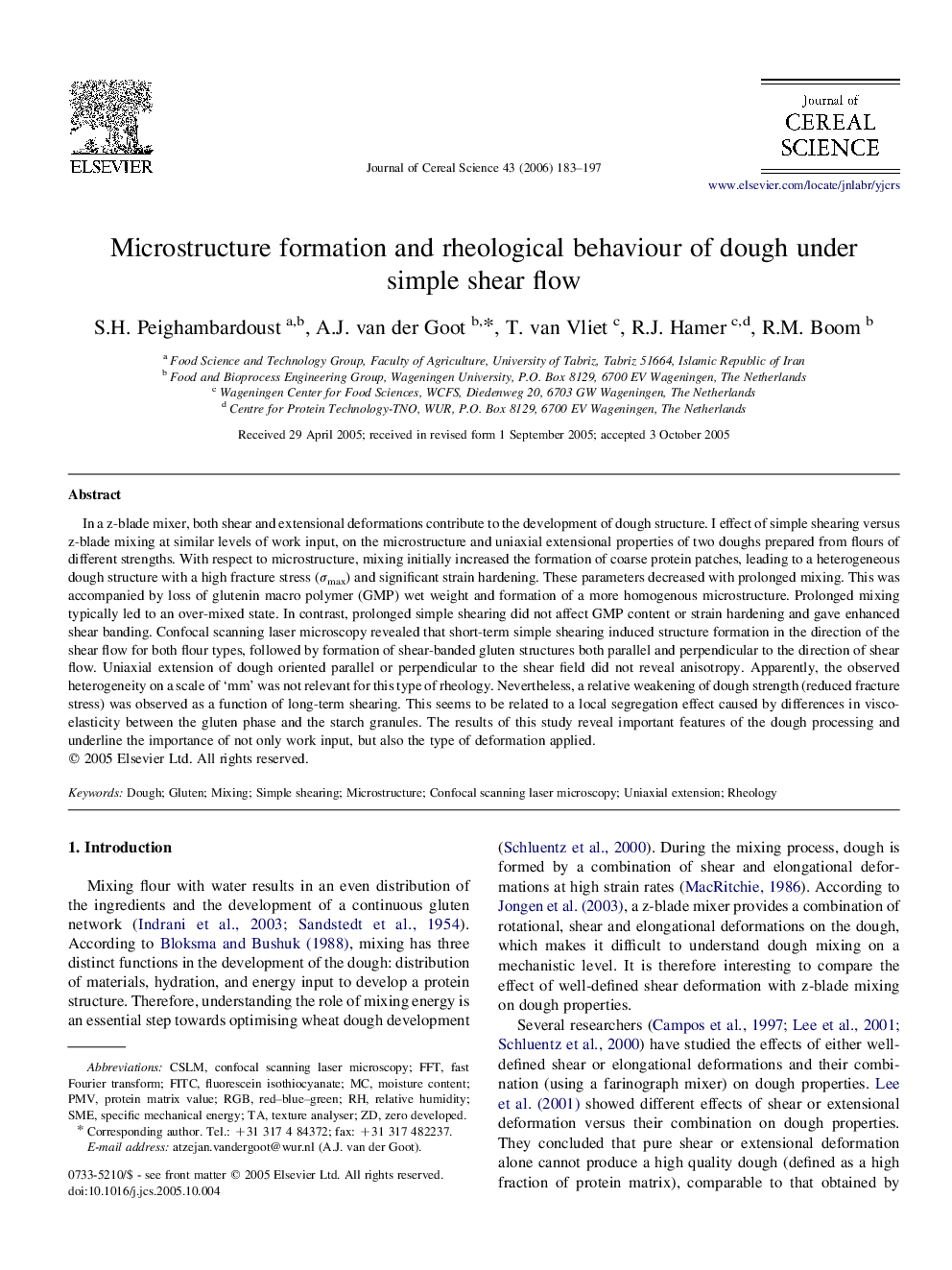| Article ID | Journal | Published Year | Pages | File Type |
|---|---|---|---|---|
| 4516898 | Journal of Cereal Science | 2006 | 15 Pages |
In a z-blade mixer, both shear and extensional deformations contribute to the development of dough structure. I effect of simple shearing versus z-blade mixing at similar levels of work input, on the microstructure and uniaxial extensional properties of two doughs prepared from flours of different strengths. With respect to microstructure, mixing initially increased the formation of coarse protein patches, leading to a heterogeneous dough structure with a high fracture stress (σmax) and significant strain hardening. These parameters decreased with prolonged mixing. This was accompanied by loss of glutenin macro polymer (GMP) wet weight and formation of a more homogenous microstructure. Prolonged mixing typically led to an over-mixed state. In contrast, prolonged simple shearing did not affect GMP content or strain hardening and gave enhanced shear banding. Confocal scanning laser microscopy revealed that short-term simple shearing induced structure formation in the direction of the shear flow for both flour types, followed by formation of shear-banded gluten structures both parallel and perpendicular to the direction of shear flow. Uniaxial extension of dough oriented parallel or perpendicular to the shear field did not reveal anisotropy. Apparently, the observed heterogeneity on a scale of ‘mm’ was not relevant for this type of rheology. Nevertheless, a relative weakening of dough strength (reduced fracture stress) was observed as a function of long-term shearing. This seems to be related to a local segregation effect caused by differences in visco-elasticity between the gluten phase and the starch granules. The results of this study reveal important features of the dough processing and underline the importance of not only work input, but also the type of deformation applied.
